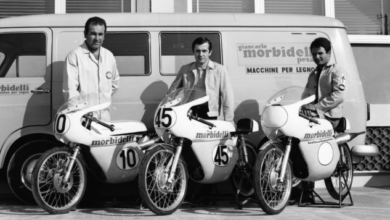Making it right in the service department
Recovering from a mistake can salvage a customer relationship
By Liz Hochstedler
Associate Editor
Every dealership has probably seen it. A day after a customer receives his newly repaired motorcycle, he rolls it back into the shop with a complaint: something wasn’t fixed right, a problem wasn’t solved at all, or another issue was created during the bike’s most recent trip to the service department.
The situation isn’t pretty, and fortunately, it doesn’t happen often at most dealerships, but on the rare occasion when a customer does return with a problem, there are appropriate ways to remedy the issue before the customer moves on to a different dealership or repair shop.
Service recovery, which is a phrase for the repairing of customer relations following a service issue, is key to keeping a customer loyal and preventing him from spouting off around town and online about a bad experience.
“Everyone makes mistakes. The question is how you deal with them,” sales trainer Don Cooper, The Sales Heretic, said.
Solving the issue
As soon as a customer brings an issue to a dealer’s attention, the customer should be thanked for returning to the dealership, Cooper says. From there, dealers should follow a specific recovery process.
“First you need to apologize for the issue to the customer. No matter what happens, that customer has to get to that point,” said George Arbuch, founder of MotoAdvisor. “Then move on to, ‘Let me understand what the situation is,’ and then for step three you promise a solution to it, and then you make sure that you can fulfill that promise in a timely manner.”
The first key to solving any issue is to understand what a customer is asking of the dealership, as Bill Franke, owner of Bill’s Cycles in Henderson, Texas, has learned.
“I either understand what he’s talking about, and I take care of it, or I try to understand what he’s talking about,” he said. “My procedure is to make it right if I didn’t give him what he wanted, or if he didn’t understand what he wanted.”
Though service complaints are rare at Franke’s dealership, he has a process for dealing with each, including moving those customers to the front of the service line when possible.
“The customer’s the boss, and we have to do what he wanted,” Franke explained.
When a solution is found for an issue, and both the repair and the timeline are approved by the dealership and the customer, it’s vital that the dealership adhere to the agreement.
“The second time, you need to get it right and done in a timely manner,” Arbuch said.
Worse than an initial customer complaint would be if a dealership were to make two mistakes in a row.
“Once you offer to fix a problem, do it on a timeline that’s agreed on. You need to do it,” Arbuch added.
Along with repairing the vehicle, a dealership also has to fix its reputation with the customer, reaching out on a more personal level.
“The customer has a physical problem that needs to be solved, and even if the physical problem is resolved, there is still an emotional problem that needs to be solved — there’s frustration, anger,” Cooper said.
Providing exemplary customer service beyond what the customer asks will help alleviate any emotional anxiety.
“They should go above and beyond,” Cooper said of dealers. “The dealer has made a mistake and needs to compensate for that mistake if they’re going to retain that customer.”
Factors that have to be considered in what “above and beyond” means, include the severity of the problem, the cost of parts and labor that go into a fix, the longevity of the customer and the value of the customer.
“Dealers should keep in mind that the compensation that I’m talking about is an investment in word of mouth and future sales,” Cooper said.
Dealers can also take on some of the monetary burden and additional labor hours to remedy the situation without admitting fault, Arbuch said.
“Sometimes you have to realize that in this instance maybe you’re right, but you need to keep this customer without admitting guilt. You’re going to do some good will,” he advised.
Franke determines his responsibility for the costs by assessing the customer’s issue.
“If he says ‘This is wrong,’ I make sure I understand what it is he wants or wanted. If I agree, then I take care of it,” he explained. “If it’s something he wished he would have done, I start as if he just brought it in.”
If a dealership is in a disagreement with a customer, the dealer has to determine if the dispute is worth losing a customer over or not, Arbuch said. However, he advises that there should be a few rounds of back and forth between the customer and the dealership, and the principal or general manager should step in before a customer is shrugged off.
If complaints aren’t handled well, consequences can run from somewhat minor issues to severe legal troubles. A customer may refuse to return to the dealership, costing future sales and service trips; he may make a scene at the dealership, affecting other customers’ opinions; or the rider could go to the Internet, sharing his dissatisfaction on a variety of websites from Facebook, to Google Places, to Yelp and more.
“The consequence is going to be ranging from word-of-mouth that can spread pretty quickly, to the point where you could be driven to court, and in between, you have the customer, where if he really feels dissatisfied, he may contact the manufacturer,” Arbuch said.
Dealerships that don’t have the correct documentation of technician notes and time tickets can face intense legal battles. One dealership, Arbuch said, spent more than a year in and out of court and ended up paying $2 million after losing a service-related case.








